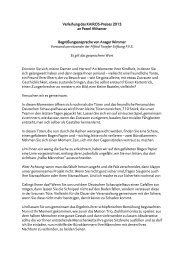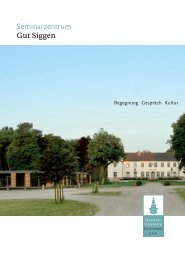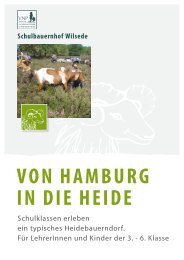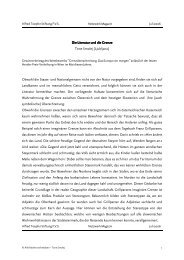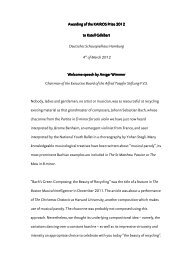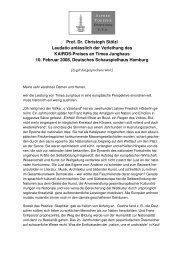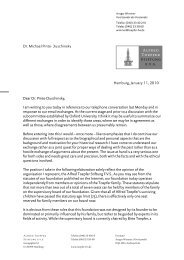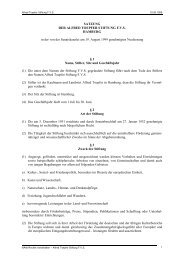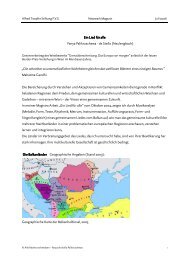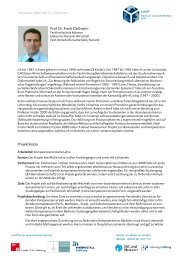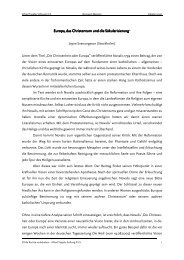0.1 Titelbild - Alfred Toepfer Stiftung F.V.S.
0.1 Titelbild - Alfred Toepfer Stiftung F.V.S.
0.1 Titelbild - Alfred Toepfer Stiftung F.V.S.
Erfolgreiche ePaper selbst erstellen
Machen Sie aus Ihren PDF Publikationen ein blätterbares Flipbook mit unserer einzigartigen Google optimierten e-Paper Software.
Netzwerkmagazin 12|08<br />
understood. I also developed an example<br />
of information board and worksheet for<br />
this exhibit.<br />
Summary<br />
Texte publik gemacht<br />
In conclusion, this thesis reveals several<br />
empirical results, which are relevant to<br />
the future life of museums. First of all, an<br />
analysis of conventional museums and<br />
related child-orientated institutions<br />
revealed that children’s needs are still<br />
not focused on by museums. For that<br />
reason, these institutions are perceived<br />
by the youngest part of modern society<br />
as irrelevant and boring. This unwelcoming<br />
impression and negative attitude is<br />
strengthened by subjects unrelated to<br />
daily life, stiff atmosphere, antiquated<br />
methods of education and high entrance<br />
fees. As a result, the museum not only<br />
loses in competition with a huge edutainment<br />
industry, but also barely exists<br />
in the consciousness of the local society.<br />
In order to avoid such a situation for the<br />
future, museums have to make an effort<br />
to get to know modern society and the<br />
ways of communication most appropriate<br />
for it. The keywords in this discussion<br />
are networking and interactivity.<br />
The ideas presented in this thesis are<br />
conceptually developed to the point<br />
that they can be produced and tested in<br />
real museum life. Moreover, some of the<br />
parts of the project might be applied to<br />
other museums or even developed into<br />
a national system, which connects many<br />
museums in the country. As far as the<br />
theoretical work is concerned, this thesis<br />
reveals an urgent need for design<br />
research in the field of exhibition design<br />
for conventional museums. As for exhibition<br />
design practice, an attempt has<br />
been made to draw the attention of<br />
designers and planners to the issue of<br />
design inclusion, understood broadly as<br />
supplementing the needs of different<br />
people. It also thematises the child as an<br />
equal and essential user. This work<br />
opens the following questions for future<br />
discussion; Are we able to design for<br />
broader audiences? How can a designer<br />
support an individual’s process of learning?<br />
How can interactivity and noninteractive<br />
museum objects work together?<br />
What design requirements are<br />
there for multigenerational usage?<br />
Katarzyna Warpas was born in Goldap / Poland and studied Intermedia at the Nicolaus<br />
Copernicus University in Torun. In 2005, she came to Hildesheim as an exchange Student<br />
to the design Faculty of HAWK Hildesheim, where she received a diploma in Graphic Design.<br />
At the same university, she has just finished her Master Studies.<br />
53<br />
<strong>Alfred</strong> <strong>Toepfer</strong> <strong>Stiftung</strong> F.V.S.<br />
www.toepfer-fvs.de



